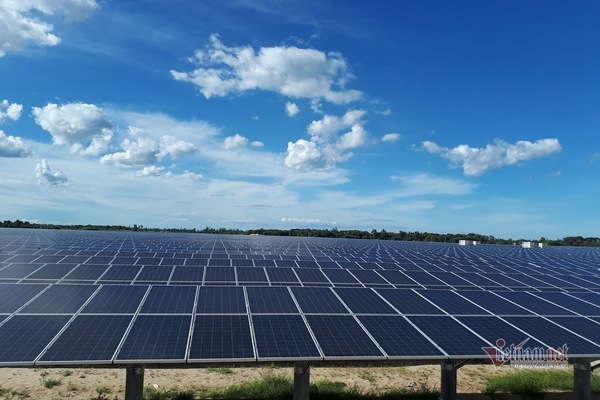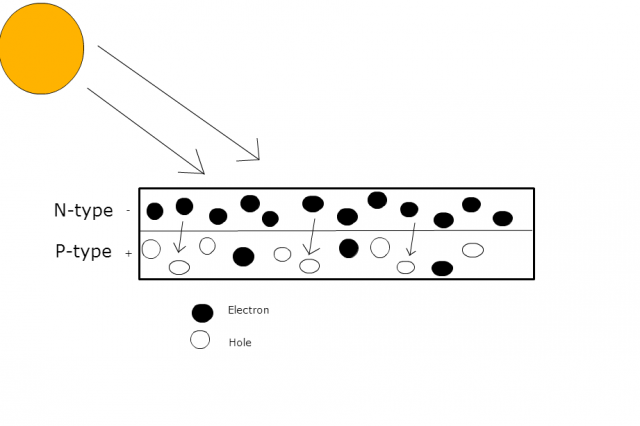-
Giỏ hàng của bạn trống!
How does solar panels work?
15/02/2020,
Array
How does solar panels work?
Solar battery (solar cell / photovoltaic) is a device that directly converts sunlight energy (solar energy) into electrical energy (electricity) based on the photovoltaic effect. The photoelectric effect is the ability to emit electrons (electrons) when light shines on them. Solar panels, the large surface panels that collect sunlight and convert it into electricity, are made of many photovoltaic cells that are responsible for generating electricity from sunlight.
Semiconductors
Silicon is known to be a semiconductor. "Semiconductors are materials that mediate between conductors and insulators. Semiconductors act as an insulator at low temperatures and have electrical conductivity at room temperature." With such properties, silicon is an important component in the construction of solar cells. Silicon has a limited conductivity, but it has a crystal structure that is great for making semiconductors. Silicon atoms need 4 electrons to neutralize the charge, but the outer shell of a silicon atom has only half the number of electrons needed, so it sticks to other atoms to find a way to neutralize the charge. To increase the electrical conductivity of silicon, scientists "impurity" it by combining it with other materials. This process is called "doping" and the doped silicon with impurities create many free electrons and holes. A silicon semiconductor has two parts, each of which is doped with another material. The first part is mixed with phosphorus, phosphorus requires 5 electrons to neutralize the charge and has 5 electrons in its shell. When combined with silicon, an electron is left over. The electron is typical for negative charges so this part will be called N type silicon (N electrode). To make P-type silicon (P electrode), the scientists combined silicon with boron. Boron only needs 3 electrons to neutralize the charge and when combined with silicon creates holes that need to be filled by electrons. When the silicon semiconductor is exposed to energy, the free electrons at the N electrode will move to fill the holes on the P electrode. Then, the electrons from N and P electrodes will be together. Create an electric field. The solar cell will become a diode, allowing electrons to move from electrode P to electrode N, without allowing reverse movement.
Of course, activating the process requires energy in contact with silicon cells. Sunlight consists of very small particles called photons emitted from the sun, small energy particles that can contact solar cells and loosen the bonds of electrons at the N electrode. The movement of free electrons from electrode N to electrode P produces an electric current.
Once the electric field has been created, all we need to do is collect and convert it into a usable current. An inverter fitted with solar cells will convert direct current (DC) into alternating current (AC). Alternating current is the electricity we are using everywhere.
https://www.youtube.com/watch?v=cd57vMNyUAY
When the silicon semiconductor is exposed to energy, the free electrons at the N electrode will move to fill the holes on the P electrode. Then, the electrons from N and P electrodes will be together. Create an electric field. The solar cell will become a diode, allowing electrons to move from electrode P to electrode N, without allowing reverse movement.
Of course, activating the process requires energy in contact with silicon cells. Sunlight consists of very small particles called photons emitted from the sun, small energy particles that can contact solar cells and loosen the bonds of electrons at the N electrode. The movement of free electrons from electrode N to electrode P produces an electric current.
Once the electric field has been created, all we need to do is collect and convert it into a usable current. An inverter fitted with solar cells will convert direct current (DC) into alternating current (AC). Alternating current is the electricity we are using everywhere.
https://www.youtube.com/watch?v=cd57vMNyUAY
Current solar cells are still inefficient
Current technologies that convert sunlight into electricity are still inefficient. Solar panels are not able to absorb all the energy of sunlight. In general, the best solar cells currently can only convert 25% of the energy it receives into electricity. Why so? The fact is that sunlight, like all other types of light, includes a spectrum with different wavelengths, each with a different intensity. There are wavelengths too weak to release electrons and some wavelengths are too strong for silicon. Moreover, solar panels need to be placed in extremely special locations. The angle of the solar panels needs to be calculated in order to receive the maximum amount of sunlight and of course the solar panels are only really useful if placed in a place with lots of sunlight. Placing solar panels in places with less sunlight will turn them into ridiculous and costly works of art.
Black silicon could revolutionize the solar panel industry
Scientists are still working on developing more efficient solar panels. Thin-film solar cells, manufactured from cadmium, are much thinner than silicon cells and have a better ability to absorb solar energy. But for now, the ability of cadmium solar cells to convert the collected energy into electricity is still poor. However, scientists want to study more about this type of solar cells because they are cheap and convenient size. One of the other major innovations worth mentioning is "black silicon". Black silicon is a silicon that has been treated to a black surface because black absorbs light better. Black silicon will create solar cells with better absorption capacity, especially in areas with low sunlight or often exposed to sunlight at low angles. The biggest drawback at the moment is that the black process of silicon increases its surface area, which increases the ability of electrons to recombine. Free electrons will seek to recombine with silicon cells rather than move in order to join with another atom to generate electrical current. Research on black silicon is still ongoing. Recently, Finnish scientists have found a way to reduce recombinant cases, increasing the ability to convert sunlight into electricity by 22.1%. Currently this level of conversion is not yet typical of silicon but it will certainly be improved in the future. Source: Electronic newspaper, khoahoctv